Understanding the Basics of Sanding and Refinishing Wood Floors
Sanding and refinishing wood floors is a process that involves removing the top layer of the wood floor to reveal a fresh layer of wood underneath. This process is important for wood floors because it helps to restore the original beauty of the wood, as well as protect it from damage. It also helps to extend the life of the floor by preventing wear and tear.
The process of sanding and refinishing wood floors involves several steps. First, the floor is sanded with a belt sander to remove the top layer of wood. This is followed by a finer sanding with a drum sander to smooth out any imperfections. After sanding, the floor is then vacuumed and cleaned to remove any dust and debris. Finally, a finish is applied to protect the wood and give it a beautiful shine.
Most types of wood floors can be sanded and refinished, including hardwood, engineered wood, and laminate. it is important to note that some types of wood floors, such as bamboo, may not be suitable for sanding and refinishing. It is also important to note that some types of wood floors may require special care and attention when sanding and refinishing.
Sanding and refinishing wood floors is an important process for maintaining the beauty and longevity of wood floors. It helps to restore the original beauty of the wood, protect it from damage, and extend its lifespan.
The Importance of Proper Preparation for Sanding and Refinishing
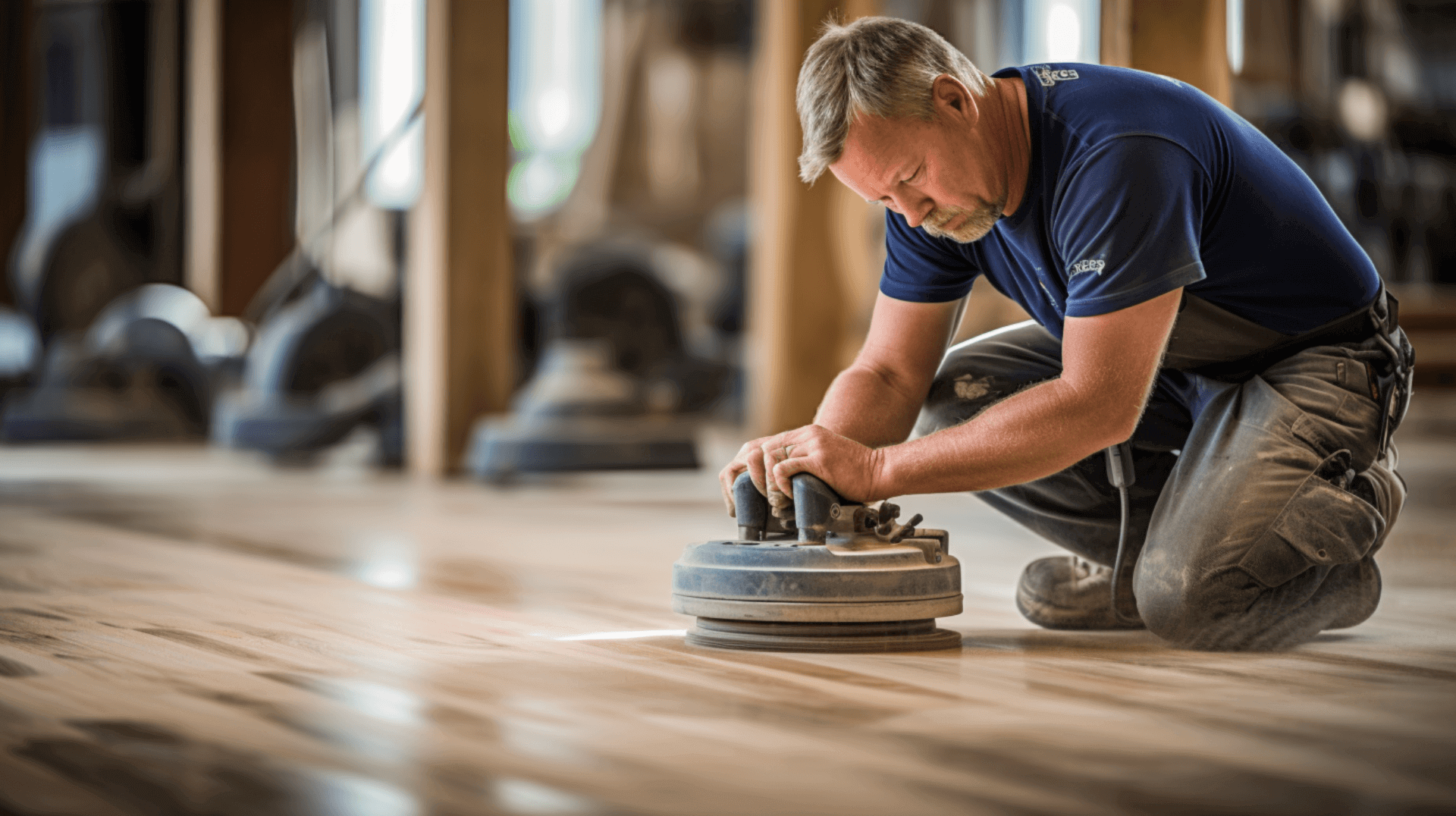
Proper preparation is essential for sanding and refinishing wood floors. Before beginning the process, it is important to take the necessary steps to ensure the safety of those involved and the quality of the finished product.
The first step in preparing for sanding and refinishing is to remove all furniture and other items from the room. This will help to ensure that the sanding process is done properly and that no items are damaged. It is also important to cover any vents or other openings in the room to prevent dust from entering the space.
Safety is also an important consideration when preparing for sanding and refinishing. It is important to wear protective clothing, such as a dust mask, goggles, and gloves, to protect against dust and debris. It is also important to ensure that the area is well-ventilated to prevent the inhalation of dust particles.
In addition to safety precautions, it is important to have the right materials and tools for the job. This includes a belt sander, a drum sander, a vacuum cleaner, a dust mask, goggles, gloves, and a finish. It is also important to have a clean cloth and a bucket of warm water for cleaning up any dust and debris that may accumulate during the process.
By following these preparation steps, homeowners and business owners can create a safe and efficient environment for sanding and refinishing wood floors. This will contribute to achieving high-quality results and prolonging the lifespan of the floors.
Indepth Look at the Sanding Process

Sanding a wood floor is a detailed process that involves using specialized tools and techniques to achieve the desired results. The process typically begins with the use of a belt sander, which is used to remove the top layer of wood and any imperfections. This is followed by the use of a drum sander to further smooth out the surface and create a uniform finish.
Different types of sanders, including belt sanders, drum sanders, and orbital sanders, may be used in the sanding process depending on the specific requirements of the wood floor. Belt sanders are ideal for removing the top layer of wood and preparing the floor for further sanding. Drum sanders are used to refine the surface and create a smooth finish. Orbital sanders are often used for the final sanding to achieve a polished look.
The sandpaper used in the sanding process comes in various grits, ranging from coarse to fine. Coarse grits, such as G40, are used initially to remove the top layer of wood and address any major imperfections. Finer grits, such as G60 or G80, are then used to achieve a smoother finish. The choice of sandpaper grit depends on the condition of the wood floor and the desired outcome.
It is crucial to prioritize safety during the sanding process. Wearing protective clothing, including a dust mask, goggles, and gloves, is essential to prevent inhalation of dust particles and protect against debris. Adequate ventilation in the work area is also important to maintain air quality.
By following these steps and using the appropriate tools and sandpaper grits, homeowners and business owners can achieve a beautifully sanded wood floor that enhances the overall aesthetics of their space.
The Art of Refinishing Wood Floors

Refinishing a wood floor is an art form that requires skill and precision to achieve the desired results. The process typically begins with the application of a finish, which is used to protect the wood and give it a beautiful shine. There are several types of finishes available, including oil-based, water-based, and wax-based finishes.
Oil-based finishes are the most durable and provide the most protection against wear and tear. They are also the most difficult to apply and require a longer drying time. Water-based finishes are easier to apply and dry quickly, but they are not as durable as oil-based finishes. Wax-based finishes are the easiest to apply and provide a beautiful shine, but they are not as durable as oil-based or water-based finishes.
Before beginning the refinishing process, it is important to take the necessary steps to ensure the safety of those involved and the quality of the finished product. This includes wearing protective clothing, such as a dust mask, goggles, and gloves, to protect against dust and debris. It is also important to ensure that the area is well-ventilated to prevent the inhalation of dust particles. Additionally, it is recommended to put down dust sheets to protect surrounding areas from dust and debris.
By carefully selecting the appropriate finish, following proper preparation and application techniques, and taking necessary safety precautions, homeowners and business owners can achieve a beautifully refinished wood floor that enhances the overall aesthetics of their space.
The Role of Wood Floor Stains in Refinishing
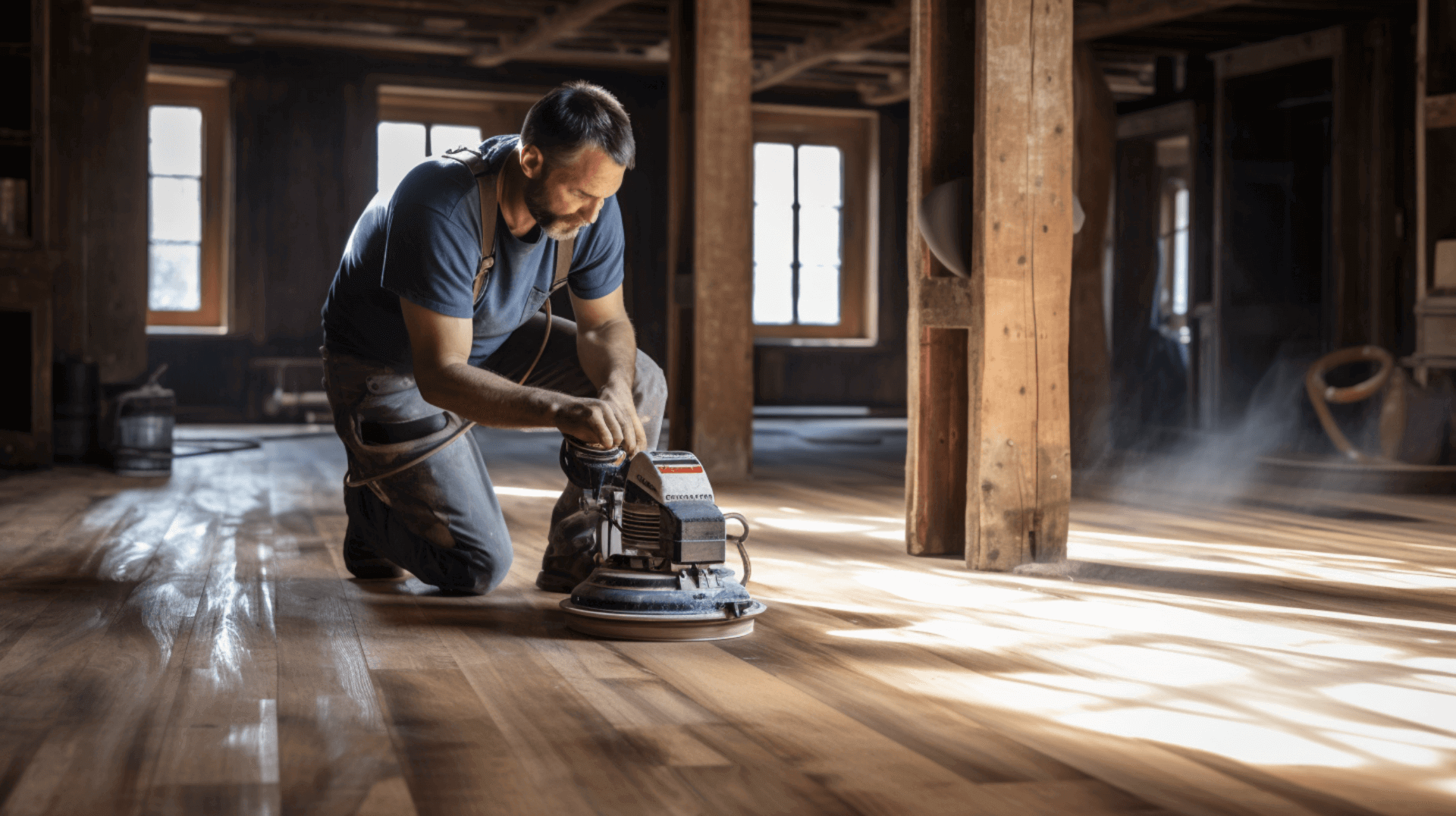
Wood floor stains play a crucial role in the refinishing process, as they not only enhance the look of the floors but also contribute to their durability. There are different types of stains available, including oil-based, water-based, and wax-based stains. Oil-based stains are known for their exceptional durability and ability to provide maximum protection against wear and tear, making them ideal for high-traffic areas. Water-based stains, on the other hand, are easier to apply and dry quickly, although they may not offer the same level of durability as oil-based stains. Wax-based stains are the easiest to apply and provide a beautiful shine, but they may require more frequent maintenance.
When applying stains during the refinishing process, it is crucial to prioritize safety and ensure the quality of the final result. This involves wearing protective clothing, such as a dust mask, goggles, and gloves, to safeguard against dust and debris. Adequate ventilation in the work area is also essential to prevent the inhalation of dust particles. Additionally, using dust sheets to protect surrounding areas from dust and debris is recommended. It is also important to investigate all suspect timbers near actual or potential sources of dampness to ensure the longevity of the wood floor.
By carefully selecting the right type of stain, following proper application techniques, and taking necessary safety precautions, homeowners and business owners can achieve a beautifully refinished wood floor that not only enhances the overall aesthetics but also maintains its durability over time.
Special Considerations for Different Types of Wood Floors

The sanding and refinishing process for different types of wood floors can indeed vary significantly, and it is crucial to consider the specific considerations for each type of flooring. Let’s take a closer look at the refinishing process for mosaic parquet, strip flooring, panel parquet, and checkerboard designs.
Mosaic parquet flooring requires a unique technique to ensure that the individual pieces of wood are sanded evenly. To achieve this, it is recommended to use a belt sander to remove the top layer of wood and any imperfections. This should be followed by using a drum sander to further smooth out the surface and create a uniform finish. It is important to use a fine-grit sandpaper during the process to achieve the desired result. Additionally, it is crucial to investigate any suspect timbers near potential sources of dampness to ensure the longevity of the wood floor.
Strip flooring typically follows a more straightforward sanding process. Using a drum sander with a medium-grit sandpaper is usually sufficient to remove imperfections and create a smooth surface. It is important to sand in the direction of the wood grain to avoid damaging the floor.
Panel parquet and checkerboard designs may require additional care during the sanding process. It is crucial to sand carefully around the edges of each panel or square to maintain the integrity of the design. Depending on the intricacy of the pattern, using an orbital sander or hand sanding may be necessary.
Regardless of the type of wood floor, clear communication with the customer is essential. It is important to explain the purpose of the visit and set realistic expectations. Taking necessary precautions, such as using shoe protectors/covers when entering the property, advising the customer to remove any materials or possessions that may restrict access to the floor, and using dust sheets to protect the surrounding areas, is also crucial.
By following these specialized techniques and taking the necessary precautions, homeowners and business owners can ensure the best results when sanding and refinishing different types of wood floors. The end result will be beautifully restored floors that enhance the overall aesthetics of the space.
Repairing and Replacing Damaged Wood Floors Before Refinishing
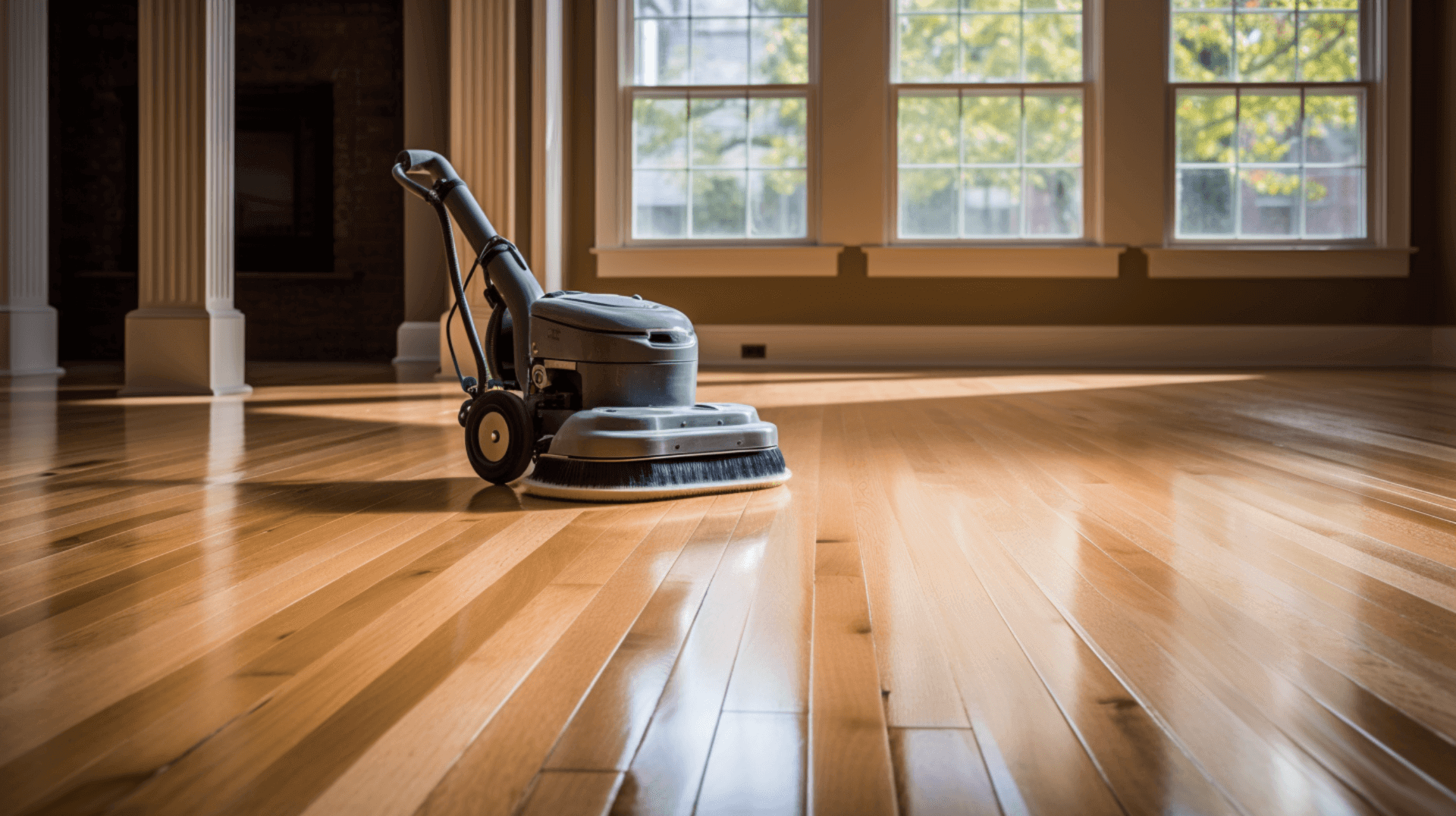
Wood floors can suffer from a variety of damages, including scratches, dents, and discoloration. It is important to identify and repair any damage before sanding and refinishing the floor. Depending on the type and extent of the damage, different types of repairs may be necessary.
For minor scratches and dents, a simple repair may be sufficient. This involves filling the damaged area with a wood filler and sanding it down to create a smooth surface. For more extensive damage, such as deep scratches or large dents, it may be necessary to replace the damaged boards. When replacing boards, it is important to ensure that the new boards match the existing flooring. This involves selecting boards of the same species, color, and grain pattern. It is also important to ensure that the boards are cut to the same size and shape as the existing boards.
In some cases, it may be necessary to replace the entire floor. This is typically done when the floor is severely damaged or when the customer wishes to change the type of flooring. When replacing the entire floor, it is important to select boards of the same species, color, and grain pattern as the existing flooring to maintain a cohesive look.
Discoloration can occur due to various factors, such as sunlight exposure or water damage. In some cases, sanding and refinishing the floor may be sufficient to remove or minimize the appearance of discoloration. for more stubborn discoloration, it may be necessary to replace the affected boards.
When repairing and replacing damaged wood floors, it is important to prioritize safety. This includes wearing protective clothing, such as a dust mask, goggles, and gloves, to protect against dust and debris. It is also important to ensure that the work area is well-ventilated to prevent the inhalation of dust particles. Additionally, using dust sheets to protect surrounding areas from dust and debris is recommended.
By addressing and repairing any damage before refinishing, homeowners and business owners can ensure a beautifully restored wood floor that enhances the overall aesthetics of their space.
The Impact of the Building’s Thermal Envelope on Wood Floors
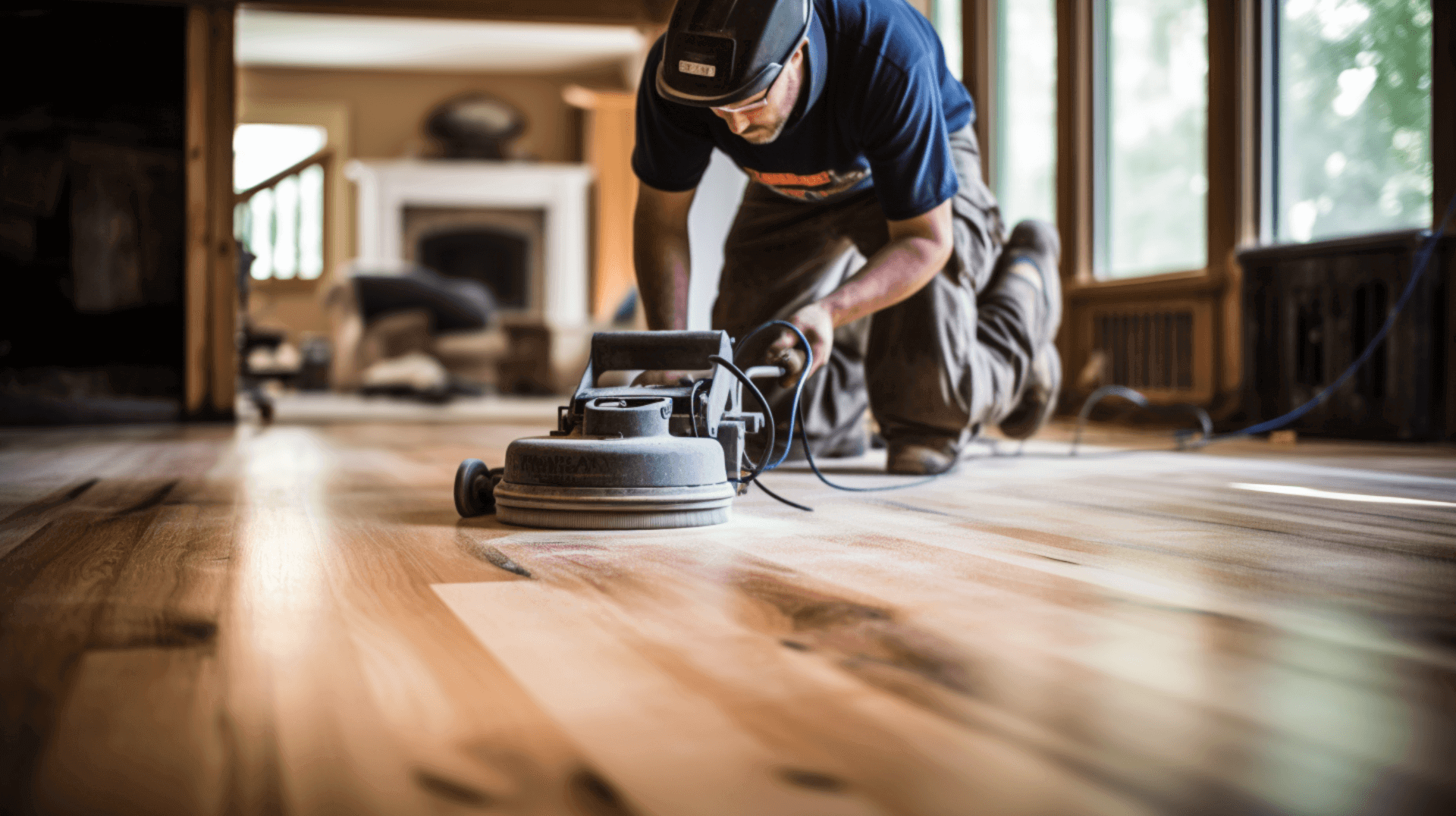
When sanding and refinishing wood floors, it is crucial to consider the building’s thermal envelope. This involves inspecting the thermal envelope for any signs of damage or deterioration, such as cracks or gaps. If any damage is found, it should be repaired before the sanding and refinishing process begins. By addressing these issues, you can ensure that the thermal envelope is properly sealed and insulated, preventing fluctuations in temperature and humidity levels that can negatively impact wood floors.
To protect wood floors from moisture, it is recommended to use a moisture barrier between the subfloor and the wood flooring. This barrier helps prevent moisture from seeping into the wood, reducing the risk of damage. Additionally, applying a sealant to the wood surface can provide an extra layer of protection against moisture.
Proper ventilation is another crucial consideration for wood floors. Adequate airflow helps prevent the accumulation of moisture and reduces the risk of mold or mildew growth. Ensuring that the building is properly ventilated will contribute to the longevity of the wood floors.
By considering the building’s thermal envelope, addressing any damage or deterioration, using a moisture barrier and sealant, and promoting proper ventilation, homeowners and business owners can ensure the longevity of their wood floors. This will help preserve their beauty and durability over time, even in the face of temperature and humidity fluctuations.
PostRefinishing: Cleaning and Maintenance of Wood Floors

Cleaning and maintaining a wood floor after sanding and refinishing is crucial for preserving its beauty and durability. To ensure the best results, it is important to use the right cleaning products and techniques.
When cleaning a refinished wood floor, it is essential to use a mild, pH-neutral cleaner specifically designed for wood floors. This type of cleaner will effectively remove dirt and debris without damaging the wood’s finish. Harsh chemicals or abrasive cleaners should be avoided as they can strip away the protective layer and harm the wood.
Regular maintenance is key to extending the life of a refinished wood floor. This includes sweeping or vacuuming the floor regularly to remove dirt and debris. When mopping the floor, it is important to use a damp mop or cloth and avoid excessive water, as this can seep into the wood and cause damage. Lightly dampening the mop or cloth is sufficient for cleaning the surface without saturating it.
To protect the wood from scratches and dents, it is recommended to use furniture pads or felt protectors on the legs of furniture. This prevents direct contact between the furniture and the floor, reducing the risk of damage. Additionally, it is important to avoid dragging furniture across the floor, as this can cause scratches and gouges.
By following these cleaning and maintenance practices, homeowners and business owners can ensure that their refinished wood floors remain beautiful and durable for years to come.
Common Mistakes to Avoid During Sanding and Refinishing

Sanding and refinishing wood floors is a complex process that requires skill and expertise. Unfortunately, many homeowners make mistakes during the process that can lead to costly repairs or even the need to replace the floor.
One of the most common mistakes is failing to properly inspect the floor before sanding and refinishing. This includes checking for any signs of damage, such as scratches, dents, or discoloration, as well as any pipes or pipes in the sub-floor that may need to be considered in the design or installation of insulation. If any damage is found, it should be addressed before the sanding and refinishing process begins.
Additionally, it is important to ensure that the floor meets the current relevant national building regulations for thermal transmittance (U-value). To achieve this standard, it is important to refer to the manufacturer’s guidance for this level of performance, although this may vary depending on the floor type, shape, and size. The floor should also be properly insulated to prevent heat loss and reduce the risk of freezing. It is crucial to calculate the area weighted U-value in accordance with the conventions in the current version of BR443 conventions for calculating U-values.
To avoid these mistakes, it is recommended to seek the assistance of professionals like GJP Floor Sanding. We have the expertise and experience to properly inspect the floor, address any damage or insulation issues, and ensure that the floor meets the necessary building regulations. By relying on professionals, homeowners can avoid costly mistakes and ensure that our wood floors are properly sanded, refinished, and insulated.
Why Choose GJP Floor Sanding for Your Wood Floor Needs
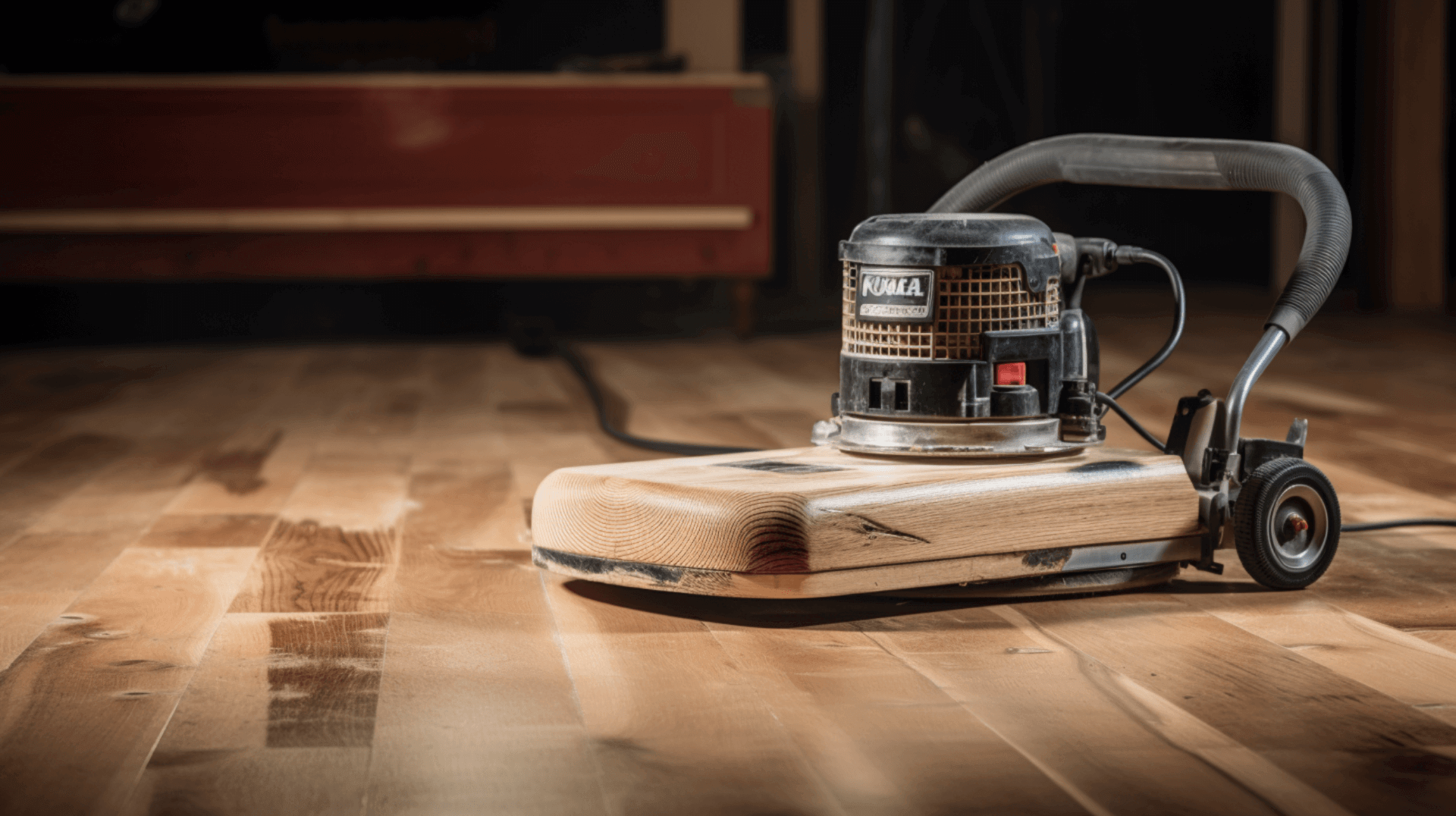
GJP Floor Sanding is a leading provider of services related to sanding and refinishing wood floors. We offer a comprehensive range of services, including inspecting the floor for damage or deterioration, addressing any issues, and ensuring compliance with building regulations. We also provide guidance on assessing the suitability of suspended timber floors for insulation and offer advice on reducing emissions, increasing comfort, and lowering energy bills.
In addition to our range of finishes, which includes both traditional oil-based and modern water-based options, GJP Floor Sanding takes steps to ensure the best results for your wood floors. We utilize the latest dustless sanding technology to minimize dust and debris during the sanding process, creating a cleaner environment and preventing particles from settling on the newly refinished floor.
GJP Floor Sanding’s commitment to quality extends to the materials and finishes we use. We prioritize using high-quality products to ensure a long-lasting and beautiful finish for your wood floors. Our expertise in assessing timber moisture content, splits, missing fixings, joist construction, and the presence of water or condensate pipes in the sub-floor void allows us to provide comprehensive and accurate guidance.
With our extensive range of services, commitment to using advanced technology, and dedication to customer satisfaction, GJP Floor Sanding is the ideal choice for all your wood floor sanding and refinishing needs.
Contact GJP Floor Sanding for Professional Sanding and Refinishing Services

GJP Floor Sanding is a trusted provider of professional sanding and refinishing services for wood floors. We utilize advanced technology to minimize dust and debris during the sanding process, creating a cleaner environment and preventing particles from settling on the newly refinished floor. This ensures a pristine finish and a healthier living or working space.
What sets GJP Floor Sanding apart is our expertise in assessing various aspects of wood floors, including timber moisture content, splits, missing fixings, joist construction, and the presence of water or condensate pipes in the sub-floor void. This comprehensive assessment allows us to provide accurate guidance tailored to the specific needs of each project.
In addition to our technical expertise, GJP Floor Sanding prioritizes the use of high-quality products. We understand that the longevity and beauty of a refinished wood floor depend on the quality of the materials used. By using top-notch products, we ensure a long-lasting and visually appealing finish that enhances the overall aesthetics of any space.
When you choose GJP Floor Sanding, you can expect professionalism, attention to detail, and a commitment to customer satisfaction. Our team of experts will guide you through the entire process, from assessing the condition of your wood floor to recommending the most suitable finishes and providing efficient and precise sanding and refinishing services.
Trust GJP Floor Sanding with your wood floor sanding and refinishing project, and experience the difference our expertise and dedication can make. Contact us today to discuss your needs and benefit from our professional services.
